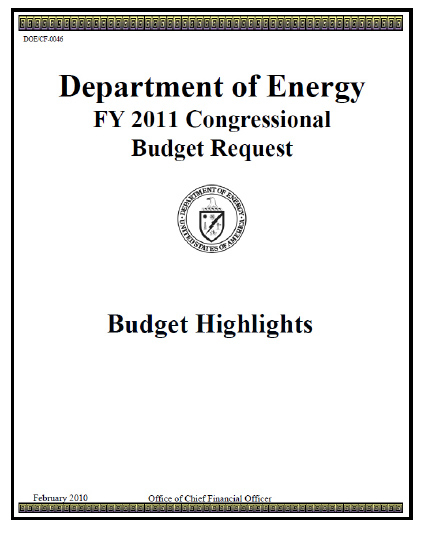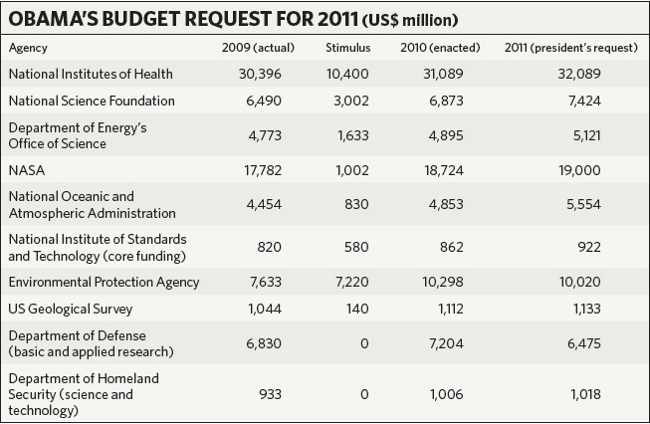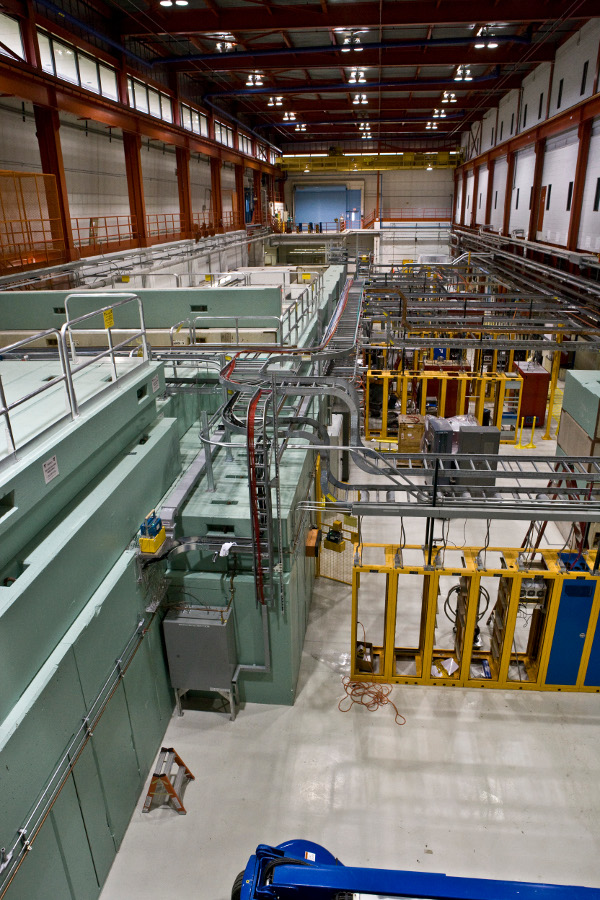Director's Corner
11 February 2010
 Barry Barish |
US Department of Energy ILC R&D funding request for fiscal year 2011
It is an understatement to say that the US ILC R&D funding has had its ups and downs! Two years ago in the final budget compromise for Fiscal Year (FY) 2008, we effectively lost our funding for almost one year. Since that time, we have taken a somewhat less aggressive approach towards the US ILC R&D programme and have designed a programme around $35 million per year to support it through the Technical Design Phase. The programme selectively supports R&D in priority areas, rather than across the project, and it does not support work towards a US site proposal or significant investment in industrialisation. I am pleased to announce that the DOE is continuing to support this revised programme and that a $35-million ILC R&D budget has been included in the President's US budget request announced last week.
In his State of the Union message late January, President Obama announced a spending freeze on discretionary spending due to the economic downturn. This was worrisome, so in this context it is especially encouraging that the President's budget released last week has increases nearly across the board for scientific research in the US averaging about 6 percent. This strong support of science and science education is echoes President Obama's remarks earlier last year on the importance of support for science:
"At such a difficult moment, there are those who say we cannot afford to invest in science, that support for research is somehow a luxury at moments defined by necessities. I fundamentally disagree. Science is more essential for our prosperity, our security, our health, our environment, and our quality of life than it has ever been before."
— President Barack Obama, Speaking at the annual meeting of the National Academy of Sciences, 27 April 2009
It is important to recognise that despite the generally good news for science support in the US, including the DOE Office of Science, the actual budget increase for high-energy physics compared to FY2010 is a more modest 2.3 percent. The President's budget proposals must now go through the long and arduous Congressional process, before the FY2011 budget will be finalised. As we well know, our budgets are vulnerable throughout that whole process. Nevertheless, we are presently on course to carry out our plan for the US part of the ILC programme. It is interesting to read the actual language used to support the $35-million DOE FY20111 budget proposal for ILC R&D:
International Linear Collider R&D
"A TeV-scale linear electron-positron collider is widely considered by the international high energy physics community to be a likely successor to the LHC, though the data from the LHC may indicate that an even higher energy accelerator (such as a muon collider) is needed to understand the new physics that emerges at this energy scale. In FY 2007, the International Linear Collider (ILC) collaboration under the auspices of the ILC Steering Group and the direction of the Global Design Effort (GDE) completed a detailed review of the R&D to be accomplished worldwide with milestones and priorities for that work. In FY 2008, the GDE initiated a five-year program to develop a Technical Design Report (TDR) that will address outstanding R&D issues, complete a baseline design, and provide a project implementation plan. Completion of the TDR in 2012 is consistent with worldwide resources currently available for the ILC R&D and coincident with first physics results from the LHC (necessary to finalize operating parameters for a TeV-scale linear collider). In FY 2011, the ILC R&D program will continue to support an important, leading U.S. role in the comprehensive and coordinated international R&D program. Accordingly, efforts will focus on R&D for systems associated with the generation and maintenance of very bright particle beams, such as electron sources, damping rings, beam dynamics development, and beam delivery systems. Support will also be provided for development and prototyping of high level RF equipment and components associated with the main linac accelerator, including ILC cryomodules. These R&D efforts also have wider applicability to other projects supported by the Office of Science."
The ILC R&D programme for the Americas is overseen by Mike Harrison, the ILC Global Design Effort Regional Director. His mandate includes not only the DOE ILC R&D addressed above, but also the smaller programmes supported by the NSF and Canada. It is important to note that detector R&D is separately funded and continues to be a struggle despite the impressive advances through the recent LOI process. Mike develops the Americas programme for ILC accelerator R&D by performing a delicate balancing act, where he takes into account the global GDE goals, the programmes and priorities of the high-energy laboratories, and the overriding desire to have a coherent programme where the Americas will be in a good position to play an important role in a future ILC project, wherever it is located.
-- Barry Barish


